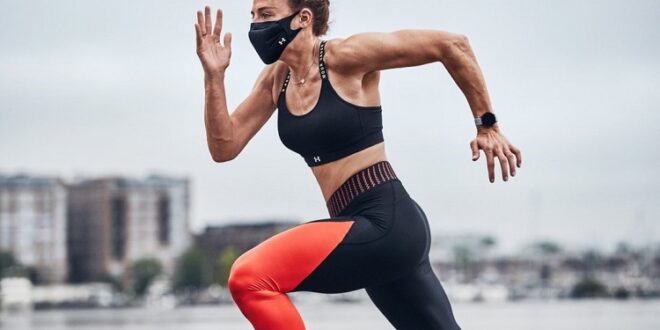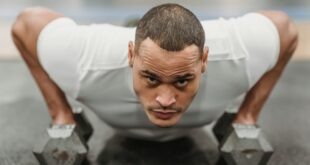Introduction
We get it. Nobody enjoys wearing a face mask. But, there is no doubt that it’s the safest way to protect you and your teammates from contracting COVID-19. The aim should be to learn how to wear these face coverings for sports and remain as comfortable as possible when exercising. In this article, we share with you the tips for wearing sports mask running while working out.
Choose the Right Face Covering
If you want to complete your workout without being distracted, it’s very critical that you find the right mask. When navigating between the many face coverings for sports, you will need to take into account several factors, which include fit of the face, shape, and material of which it is made.
The WHO (World Health Organization) recommends that you wear masks that fit snugly around the chin and nose. You should also ensure that there are no spaces on the sides. The best face sports mask running is the one made from breathable and moisture-wicking materials. These masks allow you to breathe freely even as you exercise. Another thing is that they remain dry.
Top athletic brands have designed face coverings with sportspeople in mind. Working out with a face mask and protecting yourself and those around you is easy provided you have properly fitted, comfortable, and freshly-cleaned face masks.
Monitor Your Intensity
Watching your exercise intensity is critical whether you wear a face covering or not. Studies show that oxygen flow to the lungs is hampered when you wear a face covering. It impacts your ability to carry out some exercises, for instance, HIIT or high-intensity interval training. You will most likely feel out of breath a lot quicker than normal. If that happens, avoid pushing yourself too hard and instead take frequent breaks. This enables your body to get used to the restricted flow of air of a face mask. You can increase your workout intensity gradually over time. Remember that it could take a few weeks for your body t adapt to exercising in a mask fully. To allow your body to quickly adjust to the unrestricted oxygen flow, you should practice frequently wearing a sports mask running.
Safely Adjust Your Mask in the middle of a Workout
It’s common to feel the need to want to adjust your face covering while you are working out. You may even want to remove it out completely to hydrate. Below are tips to help you do so safely:
Resist the temptation to fidget with your mask while exercising. Constantly adjusting your face mask will make it not t fit properly.
If you need to remove your mask periodically to hydrate, don’t touch the front part of your mask but instead the ear loops. The front of the mask could harbor germs.
Refrain from touching your mouth, ear, and nose while you have removed the mask. Also, don’t touch these parts throughout your exercise session.
Clean your hands properly after and after removing your mask. If you cannot get soap and water, make sure you sanitize. Also, form the habit of washing your hands before and after your workouts.
Adjust your mask only when it is necessary. Your mask should cover your nose, chin, and mouth while you work out and talk.
Carry an Extra Mask
Some people sweat profusely while exercising, and if you happen to be one of them, then we advise you carry two face coverings for sports with you. Your second mask will be vital when the first one gets damp, as germs tend to collect more commonly on moist surfaces. One advantage of a fabric sports mask running is that it can be washed after you are done exercising and keep it clean. There is no special laundry detergent for cleaning your face mask. Wash it in hot water and allow it to dry thoroughly. Always keep your masks in re-sealable bags. Again, only touch the straps of your mask and not the part covering your face. If you wear a disposable sports mask running, make sure you throw them away after each use.
Face Masks Have Benefits, too
Although it’s uncomfortable to exercise with a face mask on, it is not without some perks.
Research shows that covering your face during a workout forces your lungs to work extra harder to acquire the same volume of air. This will stretch your lung capacity over time. And when it is safe to work out without a face covering, your lungs will absorb more oxygen, which ultimately increases performance.
When Not to Use a Face Mask
You can remove sports mask coverings when taking part in the activities below:
- Water sports, for example, diving and swimming because it is harder to breathe through wet face masks. Also, change masks that get clammy with sweat immediately.
- Another instance to remove face masks is when taking part in certain activities and sports that could pose a safety hazard. These include cheer stunts, gymnastics, and wrestling. These sports have a risk of face masks getting trapped on the equipment and creating a choking risk. They could also accidentally cover your eyes and impede your vision.
Some sports like tennis and golf allow you to keep your distance, so now you can relax your mask-wearing rules.
Conclusion
Wearing masks helps to not only protect you but also those around you. However, it is not enough. There are some critical safety precautions that you also need to practice, like properly sanitizing the equipment and keeping a safe distance.
In the same way you clean and sanitize your exercise equipment after use, make sure re-usable masks are cleaned daily in hot water with soap. Only reuse a sports mask running after cleaning it.
There are many reasons supporting the advantages of wearing face masks to protect you and those around you. It’s one of the best ways to help curb the spread of COVID-19 and return to a world where wearing face coverings for sports isn’t necessary.
 HammBurg Be informed with latest news, reviews, entertainment, lifestyle tips, and much more.
HammBurg Be informed with latest news, reviews, entertainment, lifestyle tips, and much more.




